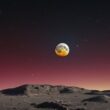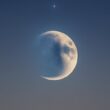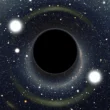A few miles from the peak of Costa Rica’s Poás volcano sits one of the most acidic lakes on the planet, vivid blue and teeming with deadly metals.
Laguna Caliente’s extreme environment, where degrees may range from 100 to 194 degrees, attracts a few fortunate scientists seeking to discover more about Mars. Whenever groundwater is warmed by volcanism, periodic phreatic eruptions happen, producing ash, stone, and steaming blasts.
Despite this, as per various investigations of the lake and a new study released this week in Frontiers in Astronomy and Space Sciences, bacteria have discovered a way to survive in one of the most inhospitable environments on our planet.
Even though the biodiversity in this lake is limited, it has adapted and survived in a variety of ways.
Per the scientists, this alien habitat may provide light on how life may have lived on Mars billions of years ago and point to new locations to hunt for signs of ancient life on the red planet.
The twin crater lakes at the volcano’s peak, both produced as a result of rainfall filling craters, could not be more unlike. Botos lake is located in an extinct crater and is encircled by tropical flora. Laguna Caliente is located inside the active crater and includes liquid sulfur and iron. The lake’s gases contribute to acid rain and acid fog, which injure neighboring ecosystems and irritate the eyes and lungs of daring visitors.
“Our finding shows that life persists in the most extreme environments on Earth. It’s hard to imagine something more hostile to life than an ultra-acidic volcanic lake with frequent eruptions. The low biodiversity coupled with numerous adaptations and metabolisms in our sample suggests the lake hosts highly specialized microbes for this kind of environment,” declared the study’s author.








